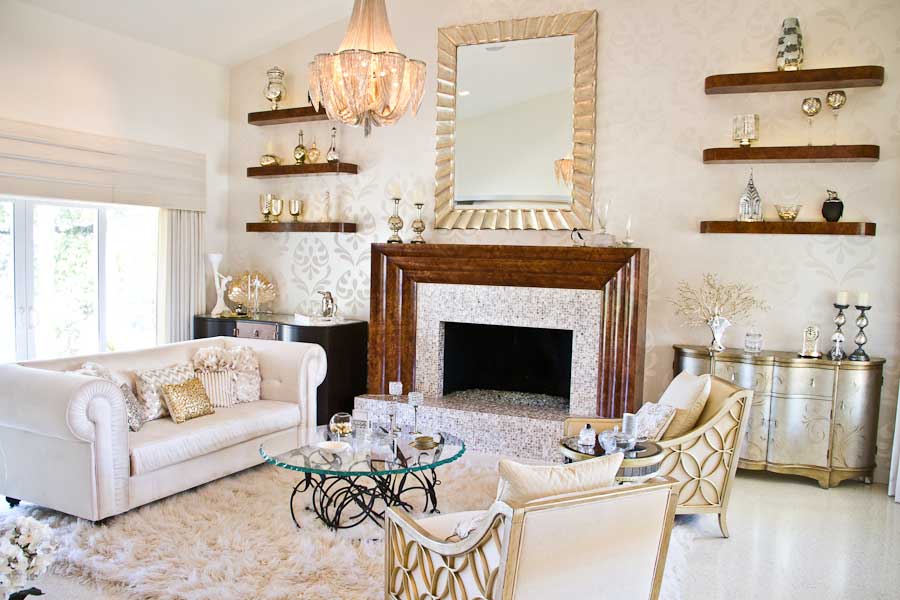As we move into 2020, some very distinctive style trends have emerged.
By Tammy Adamson-McMullen
The last decade has brought some interesting home design trends, especially where style is concerned. We’ve seen the return of mid-century modern, the evolution of industrial chic and the love affair with coastal cottage. But as we move into 2019, there are some design styles emerging that are just as distinctive.
Woodlands
Not surprisingly, this style is characterized by colors, textures and materials that look harvested from the forest. The style is not only big in home décor but also as a backdrop for movie sets, photo shoots and ad campaigns.
Of course, nature themes have been popular for some time, but what sets this style apart is that it sometimes has a distinctly French or British flare. For example, you’ll notice French blues creeping in, along with British plaids. You’ll also see many animals that the French and British have showcased for centuries in their decorations—such as hares, deer, foxes and hunting dogs. These images are finding their way into our current china patterns, wallpaper designs, and lamps and accessories.
You’ll also see images of fir boughs, acorns, pine cones and mushrooms, which are popping up on accessories as well as on area rugs and linens; medium to dark wood floors and cabinetry; heavy textures that can be nubby on one hand and luxurious on the other; and the use of stone and stone tile. The style also is marked by color schemes of deep mossy green and brown, which usually are lightened by cream or soft gray.
Wabi Sabi
This Japanese design concept has been around since the 15th Century and is all about embracing imperfections, simplicity and authenticity. The idea is to create spaces that are useful to the inhabitants and not slaves to perfection. In many ways, current Wabi Sabi styling honors both mid-century modern and Scandinavian concepts of simplicity but with an even greater emphasis on natural materials and functionality. It’s OK to include decorative items within this style, but they should have a purpose, too. An example? A wooden bowl used to hold your keys and cell phone—and better still if the bowl is slightly cracked.
One of the best features of Wabi Sabi is that it allows you to showcase items that you love but are less than perfect, like a frayed rug or chipped mirror. Whatever materials you use in this style, “Remember that authenticity is key. In this case, it’s preferable to opt for the real deal over mass-produced versions,” says Fresh.com, which notes that independent stores are a perfect place to shop when Wabi Sabi is your goal.
Modern Geometry
There’s no way you’ve missed this one! Geometric shapes are everywhere in residential and commercial design. While we’ve placed modern geometry in a category of its own, this style crosses over and touches many other design styles, from mid-century modern to Mediterranean to contemporary.
Circles, chevrons, spheres, ovals, hexagons and many other shapes and shape combinations are predominant in wallcovering, upholstery, linens and more. Circles and spheres are particularly popular and can be found top to bottom in many homes, from metallic globe chandeliers to polka-dotted area rugs.
Why is modern geometry so popular? It can be argued that as the world becomes more confusing, we look for order in our personal lives and gravitate toward definitive shapes. Whatever the reason, geometrics are “in” and offer a beautiful way to add symmetry as well as color and pattern to a space.
Old Luxe
This design style is similar to “Hollywood luxe” in that it embraces glitz and glamor, At the same time, it has an imperfect quality that mirrors key principles of Wabi Sabi as well as a bit of the shabbiness found in “Boho luxe.” Key components of this style include mirrored furnishings, gilded painting techniques, fringes, diaphanous fabrics, layered window treatments, burnished metals, crystal lighting fixtures, antique furnishings and anything that looks both glamorous and aged.
So what does old luxe actually look like? A living room might feature a salon-style sofa with gently worn pillows, 1920s-era end tables, crystal table lamps, a Turkish rug with fringe, velvety draperies with tiebacks and sheers, a tufted ottoman or two and a gilded ceiling. While this style might be over the top for some homeowners, it’s important to note that the look is full but not cluttered.
In many ways, old luxe is the opposite of pared-down Scandinavian styling. However, its goal is the same: to infuse a space with warmth and comfort, which no doubt is the reason for its popularity.

 Interior Paints
Interior Paints Exterior Paints
Exterior Paints Primers
Primers Stains & Clears
Stains & Clears
 Paint Brushes
Paint Brushes Paint Roller
Paint Roller Paint Trays & Liners
Paint Trays & Liners
